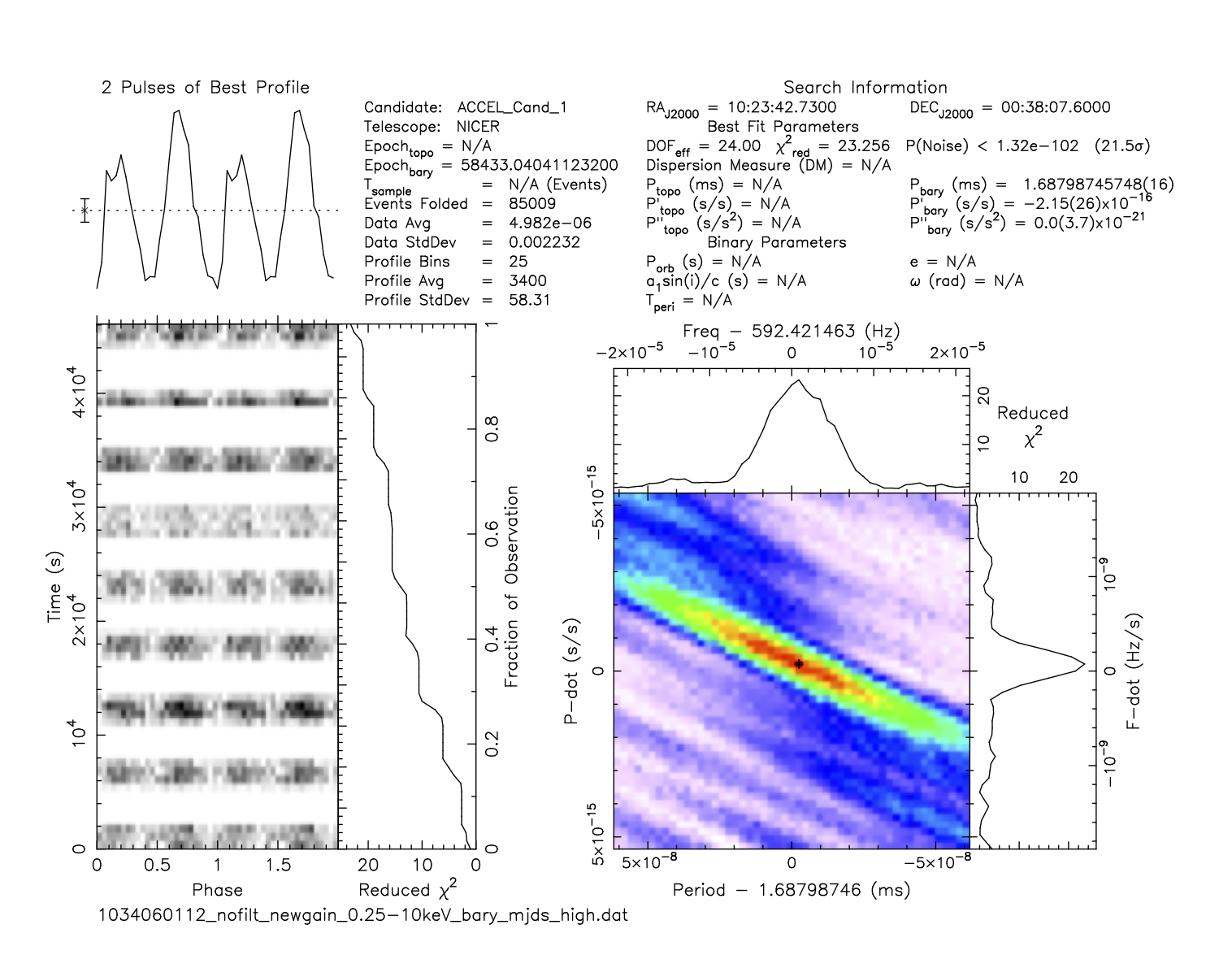NICER / ISS Science Nugget for December 14, 2018NICER demonstrates readiness to provide long-term timing for unusual accreting pulsarThe Galactic source FIRST J102347.6+003841 (also known as PSR J1023+0038 or AY Sextantis) contains a 1.69 ms pulsar in a 4.75 hr binary orbit around a bloated ~0.2 solar-mass main-sequence-like companion star. This neutron-star system is notable in that it was the first to exhibit compelling evidence for the transformation process between an accretion disk-dominated low-mass X-ray binary (LMXB) state and a disk-free radio millisecond pulsar state, thereby providing observational confirmation of the long-suspected evolutionary connection between these two classes of objects. FIRST J1023 unexpectedly underwent a transformation back into a low-luminosity accreting state in June of 2013, in which it has remained since. Observations obtained shortly thereafter with ESA's XMM-Newton revealed coherent X-ray pulsations at the 1.69 ms pulsar spin period. This discovery came as a surprise because the implied accretion rate is orders of magnitude below what is seen in the commonly observed transient accreting millisecond X-ray pulsars (AMXPs), so theory predicts that the accretion flow should be unable to overcome the "centrifugal barrier" imposed by the pulsar's strong magnetic field and rapid spin. Therefore, this system falls in an unusual and poorly explored accretion regime and may provide new insight into the physics of accretion onto magnetized objects. A long-term X-ray timing study with XMM-Newton revealed that in its accreting state PSR J1023+0038 is spinning down 25% faster compared to its previous disk-free radio pulsar state. The implication of this finding is that accretion does not dramatically alter the pulsar spin-down rate in this state, and that the pulsar wind is still active at a similar level as in the disk-free rotation-powered state. Since NICER was specifically designed for precision timing of millisecond pulsars (with two orders of magnitude better absolute timing capability compared to XMM-Newton), in November 2018 we carried out observations with NICER of PSR J1023+0038 to evaluate the possibility of using NICER alone for the long-term X-ray timing campaign.
As expected, due to NICER's ~2x higher collecting area relative to the EPIC-pn (the fast timing capable X-ray instrument onboard XMM-Newton), the pulsed X-ray signal is easily detectable in significantly shorter exposure times. As an example, the accompanying plot shows the result of a blind periodicity search (i.e., no prior knowledge of the spin period is assumed) on the 16 ks NICER observation from November 11 after correcting for the binary orbital motion of the pulsar; the double-peaked X-ray pulses from PSR J1023+0038 are detected with a very high statistical significance (with a false positive probability of 10-102). This demonstrates that NICER can provide improved measurements of the long term spin behavior of this unusual system. NICER
|



